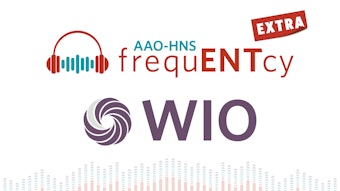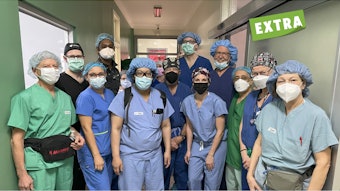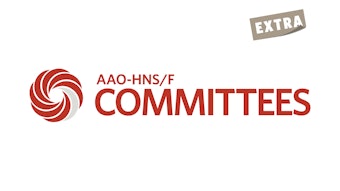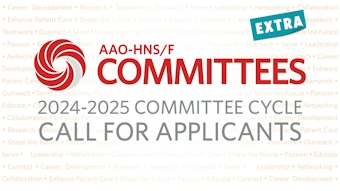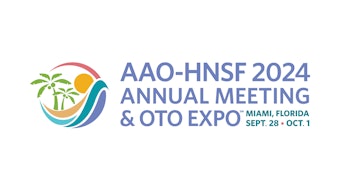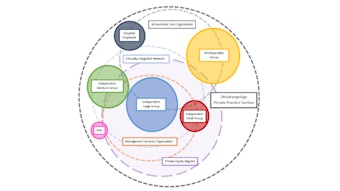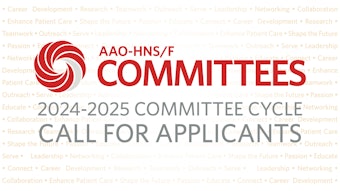Implications of a High-Signal Approach in the Otolaryngology Residency Application Process
Signal count modifications offer many of the benefits of preference signaling, while iterating on the application process to find novel means for improving the fit between applicant and program.
In a 2022 AMA-produced webinar for medical students applying to residency, Steven D. Pletcher, MD, professor of clinical otolaryngology at the University of California, San Francisco, explained what signaling is and its impact on the residency application process. Signaling is a system offering residency applicants the ability to express—or “signal”—their interest in a residency program. Eighteen specialties used signaling during the 2022-2023 residency application cycle, with that number increasing in the 2023-2024 cycle.
Wasiq Nadeem, BS, Matthew K. Lee, MD, and Parsa P. Salehi, MD, MHS
Preference signaling for otolaryngology residency matching has been an evolving addition to the National Resident Matching Program (NRMP) process for prospective otolaryngology residency candidates. It has allowed applicants and programs many benefits and has been viewed favorably since its implementation. There lies much nuance, however, in how the number of signals comes into play during this evolving process.
With an increase to 25 signals in the 2023-2024 Match, there are important implications from both applicant and program perspectives. We aim to discuss the benefits and drawbacks of this change from both perspectives while discussing important considerations for the application cycle. These modifications to the signal count will continue to offer the many benefits of preference signaling while iterating on the application process to ultimately find novel means for improving the fit between applicant and program.
Preference Signaling
Preference signaling for otolaryngology residency matching has been an evolving addition to the NRMP (the Match) process for prospective otolaryngology residency candidates. First suggested by Salehi, et al. in 2018 and implemented for the first time in the 2020-2021 cycle, a preference signal system has been viewed favorably by programs and applicants.1-3 It has increased interview offers for all applicants, with the least competitive applicants receiving the greatest benefits.2,4
Signaling has also allowed applicants to express special interest in certain programs while allowing programs a better gauge of sincere interest.5 Signals allow additional attention for respective applications that otherwise may not have been given such consideration.1,3,6 This has been especially useful given the increasing number of applications submitted (m=66 in 2019, m=80.6 in 2022) as well as the large number of applications received (m=307.1 in 2019, m=423.4 in 2022).7,8
Signals available to applicants have changed every year since the implementation of this system. Five signals were given in the 2021-2022 Match, seven signals in the 2022-2023 Match, and 25 signals in the upcoming 2023-2024 Match. The number of signals has varied greatly over the different specialties as well. Two general categories can be described: specialties that offer greater than 15 signals (high signal) and those that offer less than 15 signals (low signal). Otolaryngology now classifies as a high-signal specialty. We aim to discuss the benefits and drawbacks of this change from both perspectives while discussing important considerations for the application cycle. We postulate that 25 signals may function as a pseudo application cap and decrease the average number of applications submitted.
Benefits of Signaling
From an applicant perspective, signals have offered great benefits in increasing the likelihood of receiving an interview invite when compared with not signaling. There lies much nuance, however, in how the number of signals comes into play during this evolving season. With low-signal specialties, it is understood that applicants will certainly be applying to more programs than signals available.
The only high-signal specialty data studied are within orthopedic surgery, with 30 signals in 2022-2023. It also had a similar mean number of applications submitted per applicant (m=90.0 in 2022).7,8 Sorensen, et al. described orthopedic surgery applicants who signaled a program had a 24.4% chance of receiving an interview while those that did not had a 0.92% chance of receiving an interview.9 Deckey, et al. demonstrated applicants received an average of nine interviews from signaled programs compared with 2.3 from non-signaled programs.10 They also demonstrated a decrease in average number of total applications from 87 to 77, serving as a soft application cap.
We hypothesize a similar trend in the upcoming otolaryngology application cycle of 2023-2024. Although there is certainly not a “hard cap,” this change encourages applicants to think through their desired programs and narrow down their application list. This may allow for decreased number of applications submitted and thus decreased cost of applications. Applicants may apply to an increasing number of programs in efforts to cast a wide net and stockpile interview offers; this high-signal approach deters and helps resolve both issues and may in turn allow for increased interviews for less competitive applicants.
Otolaryngology residency programs also stand to benefit from the potential changes. With applications received decreasing in number, programs can dedicate more time to reviewing them, allowing for a more thorough, holistic review with the intent to improve inclusivity within the specialty.
Twenty-five signals may allow for signals to be weighed more heavily and decrease the importance of interest expressed outside signals through “letters of interest,” the authenticity of which may be under much scrutiny and met by a degree of skepticism by residency selection committees. This was reflected in orthopedic surgery, in which 56% of programs offered an interview only to applicants who signaled their program and 86% of programs thought signaling was an important factor in deciding who to interview.9
With a low-signal approach, applicants may have genuine interest in a program that is just outside their absolute top tier. In these cases, lack of a signal would not be truly reflective of a lack of interest in the program (i.e., lack of preference signal being of low negative predictive value). By contrast, in high-signal settings, a lack of preference signal would serve as a robust indication that an applicant does not have strong interest.
One drawback from the program perspective may be for smaller and/or remotely located residency programs—previously for two years, 50% of signals have gone to 24% of otolaryngology programs.6 Certain programs that do not receive enough signals to rely on them for interview invites may still need to evaluate applications without a signal. This has important implications for applicants for potential strategy in selecting signals wisely while still applying to programs outside the signal number. Future studies will elucidate these trends.
Conclusion
The recent increase in signal number has important implications for otolaryngology residency programs and applicants in 2023-2024. We postulate a decreased number, and thus cost, of applications per applicant. Applicants should carefully narrow down their program list of signaled and non-signaled programs. Otolaryngology programs will see a decrease in the number of applications received, thus allowing for a more thorough and holistic review of applications. These modifications to the signal count will continue to offer the many benefits of preference signaling while iterating on the application process to ultimately find novel means for improving fit between applicant and program.
References
- Salehi PP, Benito D, Michaelides E. A novel approach to the National Resident Matching Program—the star system. JAMA Otolaryngol Head Neck Surg. 2018;144(5):397. doi:10.1001/jamaoto.2018.0068
- Pletcher SD, Chang CWD, Thorne MC, Malekzadeh S. The otolaryngology residency program preference signaling experience. Acad Med. 2022;97(5):664-668. doi:10.1097/ACM.0000000000004441
- Salehi PP, Heiser A, Salehi P, et al. Ideas and innovations to improve the otolaryngology-head and neck surgery residency application and selection process. Otolaryngol Head Neck Surg. 2021;164(5):1001-1010. doi:10.1177/0194599820961989
- Benjamin WJ, Lenze NR, Yalamanchi P, et al. Impact of applicant and program factors on preference signaling outcomes in otolaryngology. Laryngoscope Investig Otolaryngol. 2023;8(2):401-408. doi:10.1002/lio2.1025
- Pletcher SD, Chang CWD, Thorne MC, et al. Interview invitations for otolaryngology residency positions across demographic groups following implementation of preference signaling. JAMA Netw Open. 2023;6(3):e231922. doi:10.1001/jamanetworkopen.2023.1922
- Chang CWD, Thorne MC, Malekzadeh S, Pletcher SD. Two-year interview and match outcomes of otolaryngology preference signaling. Otolaryngol Head Neck Surg. 2023;168(3):377-383. doi:10.1177/01945998221121312
- Association of American Medical Colleges. ERAS® statistics. Accessed September 7, 2023. https://www.aamc.org/data-reports/data/eras-statistics-data
- Bourdillon AT, Salehi PP, Wride M, et al. Trends in residency applicant volume in otolaryngology-head and neck surgery and peer specialties. Ann Otol Rhinol Laryngol. 2023;132(8):895-904. doi:10.1177/00034894221120303
- Sorenson JC, Ryan PM, Ward RA, Fornfeist DS. The value of signaling an orthopaedic surgery program: a survey to orthopaedic surgery programs. J Am Acad Orthop Surg Glob Res Rev. 2023;7(6):e23.00050. doi:10.5435/JAAOSGlobal-D-23-00050
- Deckey DG, Lin E, Gerhart CRB, Brinkman JC, Patel KA, Bingham JS. Decoding the signals: an analysis of preference signaling in the 2023 orthopaedic surgery residency match. JB JS Open Access. 2023;8(3):e23.00052. doi:10.2106/JBJS.OA.23.00052

